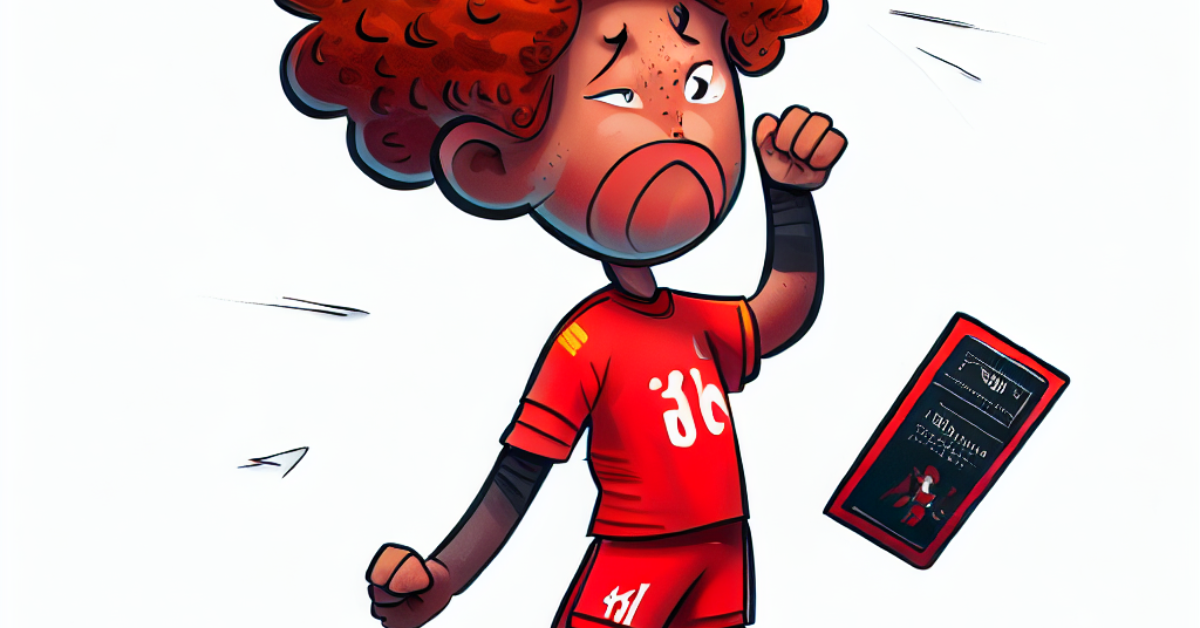To ensure fair play and adherence to the rules, the soccer world employs a system of yellow and red cards to penalize players for various infractions. In Australia, the Football Federation Australia (FFA) adheres to a specific set of codes that dictate when a player should receive a caution (yellow card) or be expelled from the match (red card). In this article, we will delve into the minor and serious infringements that warrant these cards.
Minor Infringements – Yellow Card (Caution) Codes
Yellow cards, commonly referred to as cautions, are issued by referees to players who commit relatively minor offenses. Understanding these codes is essential for players, coaches, and fans to comprehend the intricacies of these disciplinary measures.
- Y1 – Unsporting Behavior
Y1 pertains to players engaging in unsporting behavior. This can include actions like simulation, diving, or any other behavior that goes against the principles of fair play. - Y2 – Dissent by Word or Action
Y2 is handed out when a player shows dissent towards the referee or their decisions through words or actions, which disrupt the flow of the game. - Y3 – Persistent Infringement
Persistent infringement is a Y3 offense. This is issued to players who continually break the Laws of the Game, regardless of the specific violations. - Y4 – Delaying the Restart of Play
Y4 is given to players who intentionally delay the restart of play, such as holding onto the ball after a stoppage, time-wasting, or encroaching on the opponent’s free kick. - Y5 – Failing to Respect Required Distance
Y5 comes into play when a player fails to maintain the required distance during restarts like corner kicks, free kicks, or throw-ins. This code ensures fairness and prevents opponents from gaining an undue advantage. - Y6 – Unauthorized Entry or Re-entry
Y6 involves players entering or re-entering the field of play without the referee’s permission. This can lead to confusion and a potential unfair advantage. - Y7 – Leaving the Field Without Permission
Y7 is issued when a player deliberately leaves the field without the referee’s permission. This can disrupt the game and is considered unsporting behavior.
Notably, Y1, Y2, and Y4 offenses can also apply to substitute or substituted players, who may be cautioned and shown a yellow card.
Serious Infringements – Red Card (Expulsion) Codes
The red card, symbolizing expulsion from the game, is reserved for more severe violations that compromise the spirit and safety of the sport. Let’s explore the red card codes in detail.
- R1 – Serious Foul Play
R1 is issued when a player engages in serious foul play, often involving reckless challenges that endanger the safety of an opponent. - R2 – Violent Conduct
R2 is assigned when a player participates in violent conduct, which includes any action involving excessive force or brutality, whether directed towards an opponent or anyone else on the field. - R3 – Spitting at an Opponent or Person
Spitting at an opponent or any other person (R3) is a grave offense that is considered both disrespectful and unsportsmanlike. - R4 – Deliberate Handball
R4 is given when a player deliberately handles the ball to deny the opposing team a goal or a clear goal-scoring opportunity. Goalkeepers, however, are an exception within their penalty area. - R5 – Denying an Obvious Goal-Scoring Opportunity
R5 is issued when a player commits an offense that denies an opponent a clear goal-scoring opportunity by means of a free kick or penalty kick. - R6 – Offensive, Insulting, or Abusive Language/Gestures
R6 pertains to players who use offensive, insulting, or abusive language and/or gestures on the field. Such behavior is detrimental to the spirit of the game and can result in expulsion. - R7 – Second Caution in the Same Match
If a player receives a second caution in the same match, it results in an automatic red card and expulsion.
The Importance of Disciplinary Codes
The red and yellow card system in soccer is fundamental to maintaining the integrity of the game. It ensures fair play and holds players accountable for their actions on the field. By understanding these codes, players, coaches, and fans can appreciate the importance of abiding by the Laws of the Game and promoting good sportsmanship. It is crucial for Australian soccer enthusiasts to be well-versed in these codes to fully comprehend the consequences of various infringements and foster a positive and respectful soccer culture.
Essential component of soccer
The red and yellow card system is an essential component of soccer, designed to regulate player behavior and maintain the integrity of the game. In Australia, the Football Federation Australia (FFA) employs specific codes for caution and expulsion to ensure that players adhere to the Laws of the Game. By familiarizing themselves with these codes, players, coaches, and fans can better appreciate the importance of upholding sportsmanship, fairness, and respect in the world of Australian soccer.

